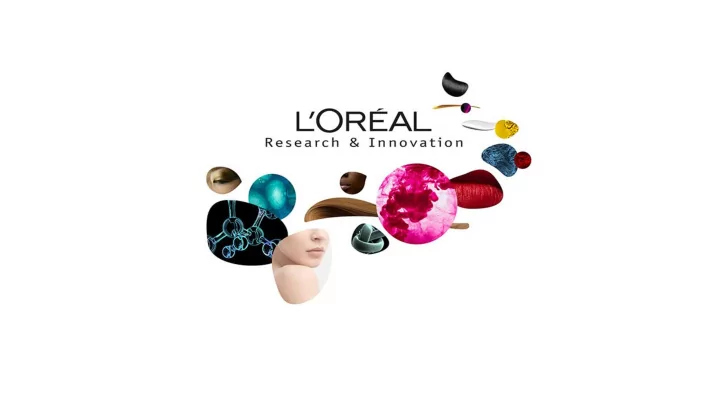

ACCELERATING AI IN COSMETICS THE CASE OF L’ORÉAL HAIRCOACH AN OVERVIEW OF GPU APPLICATIONS AT L’ORÉAL JEAN-LOUP LOYER NVIDIA GTC Europe Conference – Munich – 10/10/2017
1/ L’Oréal and AI > L’Oréal overview > AI at L’Oréal 2/ L’Oréal Hair Coach > Project overview > Data analysis 3/ Comparative performance of GPU and CPU > Benchmarking procedure > Results > Discussion NVIDIA GTC Europe Conference – Munich – 10/10/2017
L’ORÉAL AND AI NVIDIA GTC Europe Conference – Munich – 10/10/2017
ABOUT L’ORÉAL WORLDWIDE LEADER IN BEAUTY NVIDIA GTC Europe Conference – Munich – 10/10/2017
ABOUT L’ORÉAL A LARGE VARIETY OF PRODUCTS AND MARKETS NVIDIA GTC Europe Conference – Munich – 10/10/2017
RESEARCH AT L’ORÉAL OVERVIEW Key figures 5000 employees Around 600 patents per year Over 100 scientific partnerships worlwide Over 800 M€ invested per year Science & Technology Chemistry (organic, pigments) Optics (colour, models of skin and hair) Mechanics (dispensing, robotics) NVIDIA GTC Europe Conference – Munich – 10/10/2017
DATA SCIENCE AND AI AT L’ORÉAL UNDERLYING TRENDS Databases Devices Modeling & Rendering Labelled, qualified data for Billions of cheap Growing applications of • • • algorithms connected ubiquitous Augmented and Virtual Importance of devices Reality in cosmetics • recommendation systems Sophisticated tools for high Computer Graphics for • • L’Oréal knowledge and quality data in the lab virtual and fast prototyping, • historical data about evaluation of our products. human skin and hair. NVIDIA GTC Europe Conference – Munich – 10/10/2017
DATA SCIENCE AND AI AT L’ORÉAL DIVERSITY OF APPLICATIONS Research Operations Business Chemical formulas 7 billions units produced per year 1+ billion consumers • • • Data Image/videos of face/hair Dozens of plants and distributions 100 000s final PoS • • • Hair sound centers Millions of online shoppers • • Patents 1000s of raw materials & suppliers Dozens of brands in 100+ • • • countries Prediction of formula Operations Research Precision advertising • • • Models characteristics (color, toxicity …) Robotics & IoT Social Network Analysis • • Design of Experiments Time series analysis VR/AR/MR • • • Mechanical and optical models Network/graph analysis A/B testing • • • Document search and indexing • NVIDIA GTC Europe Conference – Munich – 10/10/2017
L’ORÉAL HAIR COACH NVIDIA GTC Europe Conference – Munich – 10/10/2017
PROJECT OVERVIEW BRUSH CHARACTERISTICS Microphone Listens to the sound of your hair and quantifies metrics Load cells Measures the force applied between the handle and the head brush Accelerometer/Gyroscope Counts and determines gentle/aggressive gesture Conducted pin Detects wet hair Haptic feedback Provides user feedback by vibrating Wi-Fi & Bluetooth Connects to the cloud and the user app NVIDIA GTC Europe Conference – Munich – 10/10/2017
PROJECT OVERVIEW DATA PLUMBING NVIDIA GTC Europe Conference – Munich – 10/10/2017
DATA ANALYSIS OVERVIEW NVIDIA GTC Europe Conference – Munich – 10/10/2017
DATA ANALYSIS LSTM MODELS Input data Accelerometer and gyroscope data Sample structure Patches of 1 second (100 data points) Supervised learning Real movement labelled by technicians Source: Christopher Olah NVIDIA GTC Europe Conference – Munich – 10/10/2017
COMPARATIVE PERFORMANCE OF GPU AND CPU NVIDIA GTC Europe Conference – Munich – 10/10/2017
BENCHMARKING PROCEDURE METHOD Comparison on similar dataset - 889 samples of 100x6 dimensions - Same randomized folds in the simulation and input files Simple benchmarking metrics (with some personal interpretation) Non compiled code (Windows) and no linear algebra librairies optimized for Intel Cards sharing same hardware (memory, motherboard) No other computing task done during the benchmark NVIDIA GTC Europe Conference – Munich – 10/10/2017
BENCHMARKING PROCEDURE COMPARISON METRICS Metric Unit Running time (training and inference phases) Seconds Time efficiency (training phase) FLOP per second (of training) MHz per second Running cost (training phase) € per second Transistor per second Running power (training phase) W per second NVIDIA GTC Europe Conference – Munich – 10/10/2017
BENCHMARKING PROCEDURE HARDWARE Characteristic GPU CPU Ratio GPU/CPU Model NVIDIA K4200 Intel Core i7-4500U1 Release date Q3 2014 Q3 2013 500 400 Price (2017€) 1.25 Lithography (nm) 28 22 1.3 Computation (GFLOPS) 90 (double precision), 2100 (SP) 11.4 8 Power (W) 108 15 7 Frequency (MHz) 771 1800 0.4 (less but improvable) 3540 1300 Transistors 2.7 (more but less improvable) NVIDIA GTC Europe Conference – Munich – 10/10/2017
RESULTS SUMMARY Metric Unit GPU CPU Ratio GPU/CPU Training time s 30.9 (23.9) [4.8-92.2] 148.2 (107.2) [25.3-421.3] 0.2 (5x faster) Inference time (test set) ms 109.4 (27.5) [78-20.3] 278.8 (57.3) [186.1-380.3] 0.4 (2.5x faster) Time efficiency GFLOP.s -1 2.91 0.077 37.9 MHz.s -1 24.9 12.1 Time efficiency 2 Running cost (acquisition) €.s -1 16.2 2.7 6 (17% of CPU) Running cost Trans. s -1 114.6 8.8 13 Running power W.s -1 3.5 0.1 35 (1.4x of CPU) NVIDIA GTC Europe Conference – Munich – 10/10/2017
RESULTS DETAILS NVIDIA GTC Europe Conference – Munich – 10/10/2017
DISCUSSION RESULT ANALYSIS Influence of computational task (DL) model hyperparameters (epochs, batch size) Performance gap between training and inference Impact of the hardware Relative influence of compute and memory access NVIDIA GTC Europe Conference – Munich – 10/10/2017
DISCUSSION CONCLUSION GPU more efficient for DL In absolute terms, 5 (resp. 2.5) times faster for training (resp. inference) Lower relative acquisition cost but higher relative running cost (energy consumption) Improvement through frequency? Next steps Compare other ML/DL models and computational tasks (VR…) Define better metrics for hardware comparisons - Combining more than 2 criteria - System-based NVIDIA GTC Europe Conference – Munich – 10/10/2017
THANK YOU! Jean-Loup Loyer JLOYER@rd.loreal.com NVIDIA GTC Europe Conference – Munich – 10/10/2017
Recommend
More recommend